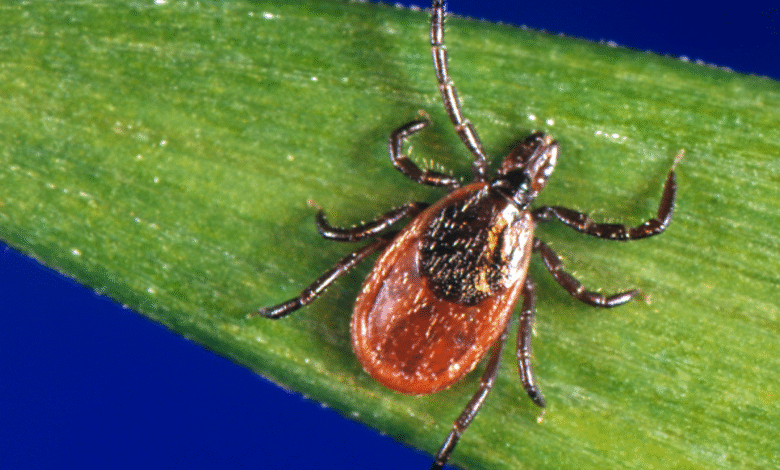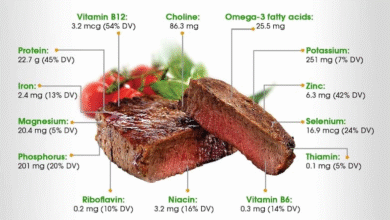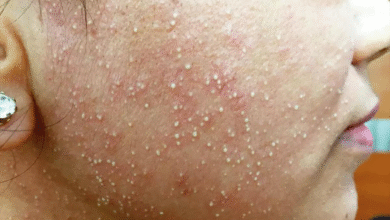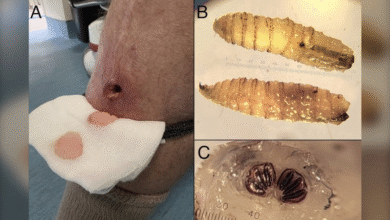Powassan Virus: Understanding the Threat of Tick-Borne Illness

The Powassan virus is an emerging public health threat, particularly as tick season intensifies across the United States. Recently, a Maine resident was hospitalized with this serious tick-borne illness, highlighting the need for greater awareness of Powassan virus symptoms and prevention strategies. Transmitted through infected woodchuck and deer ticks, this virus poses a unique challenge due to its rapid transmission, occurring in as little as 15 minutes after a tick bite, unlike Lyme disease, which requires a longer attachment. The clinical implications can be severe, with symptoms that range from mild fever to neuroinvasive diseases like encephalitis. Without any available vaccines, it is crucial for the public to adopt effective tick prevention strategies to mitigate the risks associated with this dangerous virus.
The Powassan virus, a lesser-known yet potentially deadly tick-borne disease, has been gaining attention as cases increase in areas like the Northeast and Great Lakes. This zoonotic threat, spread by infected ticks, shares some similarities with other tick-related illnesses, notably Lyme disease, albeit with a far quicker transmission rate. While initial symptoms might resemble those of common infections, the severity of infection can escalate rapidly into neurological complications. Notably, the absence of vaccines for Powassan emphasizes the importance of robust prevention methods, making awareness and protective measures critical. As the summer months bring heightened risk, understanding this virus is vital for public health.
Understanding the Powassan Virus and Its Threat
The Powassan virus is a significant tick-borne illness that poses serious health risks, particularly in regions where tick populations flourish. Identified primarily in the Northeast and Great Lakes areas of the United States, this virus is transmitted through the bite of infected ticks, such as the woodchuck tick or deer tick. Symptoms can vary widely, ranging from mild flu-like indications to severe neurological conditions. In severe cases, the Powassan virus can lead to brain inflammation, which can be fatal in 10% to 15% of cases. Therefore, understanding this virus is crucial for public health awareness.
Additionally, the Powassan virus’s rapid transmission rate sets it apart from other tick-borne diseases. While Lyme disease transmission typically occurs after a tick has been attached for a minimum of 36 hours, the Powassan virus can be transmitted within just 15 minutes of a tick bite. This rapid infection cycle highlights the urgent need for awareness and prevention strategies to mitigate risk, especially among vulnerable populations like older adults and those with weakened immune systems.
Frequently Asked Questions
What are the symptoms of Powassan virus and how do they compare to Lyme disease?
The initial symptoms of Powassan virus include fever, headache, vomiting, and weakness. Unlike Lyme disease, which generally requires a longer tick attachment time for transmission, Powassan virus can be transmitted in as little as 15 minutes. Severe cases can lead to neurological symptoms like confusion, seizures, and coordination loss.
How is Powassan virus transmitted and how does it differ from other tick-borne illnesses?
Powassan virus is transmitted to humans through bites from infected woodchuck ticks or deer ticks. It differs from other tick-borne illnesses like Lyme disease in that it can be transmitted significantly faster — within 15 minutes of a tick bite, while Lyme disease typically requires a 36- to 48-hour attachment.
Who is most at risk for severe disease from the Powassan virus?
Anyone can develop severe disease from Powassan virus, but older adults, children, and immunocompromised individuals are at the highest risk. Severe cases can have fatal outcomes, and many survivors face long-term neurological challenges.
Are there any vaccines or specific treatments available for Powassan virus?
Currently, there are no vaccines or specific treatments for the Powassan virus. Management focuses on alleviating symptoms and complications. Due to the lack of treatment options, prevention strategies, similar to those used for Lyme disease, are crucial.
What tick prevention strategies can reduce the risk of Powassan virus infection?
To reduce the risk of Powassan virus infection, employ tick prevention strategies such as using EPA-registered insect repellents with at least 20% DEET, wearing long-sleeved clothing, tucking pants into socks, and avoiding wooded areas during peak tick season.
How common are cases of Powassan virus in the U.S.?
Cases of Powassan virus in the U.S. are relatively rare, with only about seven to eight diagnoses reported each year, mainly occurring in the Northeast and Great Lakes regions. However, the incidence of these cases has been increasing.
What long-term effects can result from Powassan virus infection?
Long-term effects of Powassan virus infection can include permanent neurological damage, which may manifest as chronic headaches, memory issues, and decreased muscle strength. Severe cases may lead to lasting health challenges.
Why has Powassan virus emerged as a public health concern?
Powassan virus has emerged as a public health concern due to its rapid transmission, severe health consequences, and the absence of effective treatments or vaccines. With rising case numbers, especially in tick-prone areas, awareness and prevention are critical.
| Key Points | Details |
|---|---|
| Diagnosis and Symptoms | A Maine resident diagnosed with Powassan virus showed neurological symptoms and was hospitalized. |
| Transmission | Transmitted via infected woodchuck ticks or deer ticks; can transmit in as little as 15 minutes. |
| Incidence | Only 7-8 cases diagnosed yearly in the U.S., increasing in Northeast and Great Lakes regions. |
| Fatality Rate | 10%-15% of severe cases are fatal; long-term neurological damage is common among survivors. |
| Vaccine Availability | No vaccine currently exists for Powassan virus. |
| Prevention Strategies | Use insect repellents with at least 20% DEET; wear protective clothing. |
Summary
Powassan virus is a serious tick-borne illness that poses a significant health threat, especially in the Northeast U.S. With an alarming rate of rapid transmission compared to other tick-borne diseases, Powassan virus can lead to severe neurological complications and even death. Preventive measures such as using insect repellents and wearing protective clothing are vital in reducing the risk of infection. As awareness of Powassan virus grows, it’s crucial for the public to understand its symptoms, transmission methods, and the importance of prevention.




